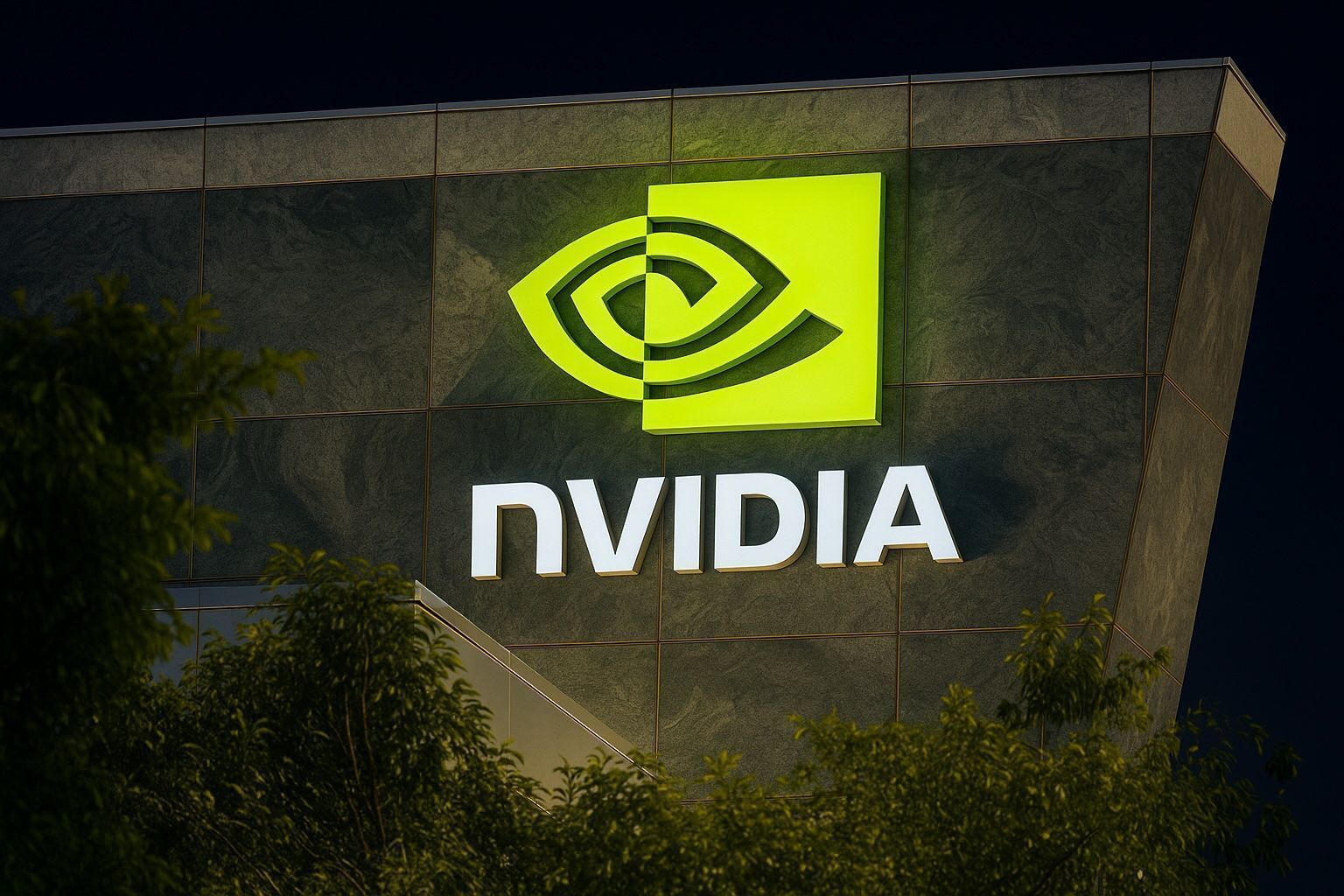Firefly Aerospace Inc. (Nasdaq: FLY) sent a fresh jolt through the space-stock universe this week, as investors digested a powerful mix of better‑than‑expected third‑quarter results, a higher full‑year outlook, a clearer path back to flight for its Alpha rocket—and a growing list of shareholder lawsuits.
The Texas‑based space and defense technology company reported Q3 2025 revenue that nearly doubled sequentially, raised its 2025 revenue guidance, and detailed fixes to the September ground‑test failure that destroyed an Alpha first stage. [1]
At the same time, multiple law firms, including Robbins LLP, are pushing class‑action claims tied to Firefly’s August IPO and the September test anomaly, underscoring how high the stakes have become for the fast‑growing launcher. [2]
FLY stock: violent rally, lingering pain
In pre‑market trading on November 13, Firefly Aerospace shares surged roughly 18–22%, trading around $22–22.4 after the earnings release and guidance hike, according to early session data from Reuters, TIKR and other market trackers. [3]
By regular trading hours, the exuberance had faded. As of the latest quote, FLY is trading around $18.31, right at the bottom of its 52‑week range of $18.21 to $73.80, implying a market capitalization of about $2.7 billion. [4]
The big picture is still brutal:
- Firefly priced its IPO at $45 per share on August 7, 2025, with the stock opening around $70 in its Nasdaq debut. [5]
- Since then, a disappointing Q2 report and the September 29 Alpha test explosion in Texas have sent the stock down roughly 60–70% from its initial highs, according to European financial coverage and earnings‑day recaps. [6]
Thursday’s move shows investors are willing—at least for now—to reward Firefly for clear operational progress and higher guidance, even if the stock remains deep in “busted IPO” territory.
Q3 2025: revenue nearly doubles quarter‑on‑quarter
Firefly’s Q3 2025 results show a company that is growing fast, but still burning cash at a heavy rate.
Headline numbers for Q3 2025 (three months ended Sept. 30):
- Revenue: $30.8 million
- Gross profit: $8.5 million (vs. $7.8 million a year earlier). [9]
- Loss from operations: $(62.2) million (vs. $(34.2) million in Q3 2024). [10]
- Net loss: $(133.4) million, compared with $(40.8) million a year ago, largely driven by higher R&D, fair‑value changes in warrants and debt‑related items. [11]
- GAAP net loss per share: $(1.50), versus $(3.57) in the prior‑year quarter (reflecting a larger share count post‑IPO). [12]
On an adjusted basis, Firefly reported EPS of roughly –$0.33, beating analyst expectations of a deeper –$0.41 loss per share, according to earnings summaries from market data providers. [13]
Management highlighted that the bulk of the revenue growth came from spacecraft programs, not launches:
- About 70% of Q3 revenue (~$21.4 million) was tied to spacecraft‑related sales, including the Blue Ghost lunar lander and the Elytra orbital vehicle, with the remainder from launch and other services. [14]
CEO Jason Kim framed Q3 as proof that Firefly’s non‑launch businesses can carry the load while Alpha returns to flight:
(Paraphrased) Our strong revenue growth reflects steady execution across our spacecraft contracts and continued progress in launch as we strengthen our culture of safety, quality and reliability. [15]
Guidance raised and backlog swells to about $1.3 billion
The number that most excited Wall Street wasn’t Q3 revenue—it was the forecast for the rest of the year.
Firefly now expects 2025 full‑year revenue between $150 million and $158 million, up from a prior range of $133–145 million and ahead of Wall Street consensus near $135–136 million. [16]
Behind that guidance is a rapidly growing book of business:
- Firefly ended Q3 with a revenue backlog of roughly $1.3 billion, up from about $1.1 billion at the end of Q2, according to its 10‑Q summary and earnings call commentary. [17]
- Backlog spans:
- Multiple NASA CLPS (Commercial Lunar Payload Services) Blue Ghost missions. [18]
- A multi‑launch Lockheed Martin agreement for up to 25 Alpha flights. [19]
- Contracts with Northrop Grumman, the U.S. Space Force (including the responsive “Victus Haze” mission), and additional NASA missions using the Elytra spacecraft. [20]
Recent NASA wins featured prominently in the Q3 materials:
- A $176.7 million NASA contract for Blue Ghost Mission 4 to deliver payloads to the Moon’s south pole. [21]
- A $10 million contract addendum paying Firefly for extra lunar data collected during Blue Ghost Mission 1, described by the company as a milestone in monetizing Moon‑surface data. [22]
Taken together, the raised guidance and swelling backlog suggest Firefly is gaining commercial traction far beyond being “just another launch startup.”
Alpha rocket: anomaly traced to contamination, return to flight targeted for late 2025–early 2026
The elephant in the room for Firefly is Alpha, its small‑lift rocket capable of delivering roughly a metric ton to low Earth orbit. September’s explosive ground‑test anomaly rattled investors and fed the lawsuits now circling the stock.
On September 29, during a ground test at Firefly’s Briggs, Texas facility, the first stage for Alpha Flight 7 (FLTA007) suffered what the company later described as a “combustion event,” destroying the stage and forcing a stand‑down. [23]
Detailed post‑mortem findings released this week paint a more reassuring picture for future flights:
- Engineers traced the root cause to “minute hydrocarbon contamination” introduced by a process error during stage‑one integration, not a fundamental design flaw in the engines or vehicle. [24]
- The test stand itself remained intact, and no personnel were injured. [25]
- Firefly has:
- Tightened inspection requirements for fluid systems.
- Upgraded sensor coverage on the first stage.
- Added more robust automated abort mechanisms to shut down tests quickly. [26]
Return‑to‑flight plan
- Firefly will use a different first stage from its production line for Flight 7; the second stage is already at Space Launch Complex 2 at Vandenberg Space Force Base in California. [27]
- After a static‑fire test at Vandenberg, Alpha Flight 7 is now targeted for launch between late Q4 2025 and early Q1 2026, carrying a Lockheed Martin technology‑demonstration payload. [28]
The mishap also delayed the U.S. Space Force’s Victus Haze responsive launch mission, which had been slated for fall 2025 and is now pushed to allow time for lessons‑learned. [29]
For a company whose brand is built around fast‑turn, responsive launch, the pressure to get Alpha flying reliably—and soon—is enormous. Thursday’s rally suggests investors believe the current fix‑and‑fly plan is credible, but another significant failure would likely hit both FLY’s price and its government relationships hard.
SciTec acquisition: betting big on national security and “Golden Dome”
Beyond launch and lunar missions, Firefly is making a massive bet on defense‑focused software and data.
In early November, the company closed its approximately $855 million acquisition of SciTec National Security Technology Company, a specialist in remote sensing, missile warning and defense, space‑domain awareness and AI‑driven command‑and‑control software. [30]
According to Firefly’s earnings commentary and industry coverage:
- SciTec brings mission‑proven software, big‑data processing pipelines and state‑of‑the‑art classified facilities into Firefly’s orbit. [31]
- Firefly wants to combine its hardware (Alpha, Eclipse medium‑lift vehicle, Blue Ghost, Elytra) with SciTec’s AI‑driven analytics to pursue opportunities in the emerging “Golden Dome” missile‑defense architecture, a program suite U.S. officials describe as a multi‑hundred‑billion‑dollar market over time. [32]
The strategy is clear: become a vertically integrated space‑and‑defense prime contractor able to build the hardware, fly the mission, process the data and feed it back into defense networks—rather than selling just one piece of the stack.
Analysts: Deutsche Bank turns bullish, but risks remain high
Wall Street’s reaction to the quarter has been cautiously optimistic.
- Deutsche Bank upgraded Firefly from “Hold” to “Buy” following the earnings beat, while cutting its price target to $30 from $40, citing both the operational progress and the reality of recent setbacks. [33]
- The bank highlighted the resolution of the Alpha first‑stage issue and the planned Flight 7 launch by early 2026 as potential upside catalysts. [34]
Across the broader analyst community:
- Around 6–7 analysts now cover FLY, with the average rating sitting at “Buy.” [35]
- The median 12‑month price target is roughly $52–53, implying upside of around 180–190% from the ~$18.3 share price cited in today’s trading summary. [36]
But the fundamental risk profile is still extreme. GuruFocus and other data providers flag:
- Trailing‑12‑month net margin: about –173%.
- Operating margin: about –158%.
- Altman Z‑Score around –2.3, placing Firefly in a statistical “distress zone” where the probability of financial trouble is elevated. [37]
- A price‑to‑sales ratio near 0.04, close to its 1‑year low, and a technically oversold RSI, which some contrarians see as a sign of potential undervaluation. [38]
In short: analysts broadly like the strategic positioning and backlog, but acknowledge that Firefly must execute almost flawlessly—on launches, lunar missions, and SciTec integration—to justify their price targets.
Legal clouds: IPO‑era class actions gather
Amid the earnings buzz, shareholder litigation around Firefly’s summer IPO is quietly multiplying.
A new Robbins LLP press release on November 13 reminds investors of an existing securities class action brought on behalf of anyone who: [39]
- Bought Firefly common stock in the August 7, 2025 IPO, or
- Purchased Firefly securities between August 7 and September 29, 2025.
The complaint alleges that Firefly’s offering documents and subsequent statements:
- Overstated demand and growth prospects for its Spacecraft Solutions offerings.
- Overstated the operational readiness and commercial viability of the Alpha rocket program.
- Failed to adequately warn that revealing these issues would likely have a material negative impact on the stock price. [40]
The filing points to two key stock‑price breaks:
- After the Q2 2025 results on September 22, FLY fell about 15% to $41.94 the next day.
- After Firefly disclosed the Alpha Flight 7 first‑stage loss on September 29, the stock slumped another ~21% to $29.30. [41]
Other firms, including the Schall Law Firm, have circulated similar notices inviting investors with losses to seek lead‑plaintiff status. [42]
For now, these cases are at an early stage, and no court has ruled on the merits of the allegations. But they add legal and reputational overhang precisely as Firefly tries to convince institutional investors it belongs in the same conversation as established public players like Rocket Lab.
What today’s news means for Firefly Aerospace and FLY stock
For investors and industry watchers, today’s cluster of Firefly news paints a picture of a company in the middle of a high‑beta transformation:
Positives:
- Explosive top‑line growth: nearly 2x sequential revenue and 38% YoY growth in Q3. [43]
- Raised 2025 guidance and a $1.3 billion backlog, anchored by NASA CLPS missions, Space Force work and multi‑launch commercial deals. [44]
- Clear, technically credible explanation for the Alpha anomaly, with process‑driven fixes rather than fundamental design changes. [45]
- The SciTec acquisition, which could significantly expand Firefly’s role in U.S. national‑security architectures like Golden Dome. [46]
Risks and headwinds:
- Persistent large net losses and negative margins, plus a distress‑zone Altman Z‑Score, leaving little room for operational missteps. [47]
- Execution risk around:
- Alpha Flight 7 and 8.
- Blue Ghost Mission 2 and follow‑ons.
- Integration of SciTec and realization of defense‑software synergies. [48]
- Legal uncertainty from multiple shareholder class actions tied to the IPO and September mishap. [49]
Key catalysts to watch in the coming quarters
- Alpha Flight 7 launch window (late 2025–early 2026) and subsequent reliability track record. [50]
- Progress on Blue Ghost Mission 2 and ramp‑up for Missions 3 and 4. [51]
- New NASA and DoD contract awards, especially around Golden Dome‑related capabilities and responsive launch. [52]
- Updates on SciTec integration and any incremental revenue or margin contributions. [53]
- Court developments in the securities‑fraud class actions and any related disclosures from Firefly. [54]
Bottom line
Firefly Aerospace’s November 13 news cycle captures the essence of modern space‑stock investing: huge technological ambition, surging revenue, serious government contracts—and equally serious risk.
The company is now clearly more than an early‑stage launcher. It’s a vertically integrated space and defense platform with:
- A growing mix of launch, lunar, orbital‑vehicle and software/data revenue, and
- A share price that still reflects deep skepticism after the post‑IPO slide. [55]
For investors, FLY remains a high‑volatility, high‑risk name where outcomes will likely be driven by a few very visible milestones—especially the Alpha return to flight and the performance of upcoming lunar and defense missions.
As always, this article is for information purposes only and should not be construed as investment advice. Anyone considering FLY should carefully review the company’s latest SEC filings, risk factors and earnings materials, and consider consulting a qualified financial adviser before making decisions. [56]
References
1. www.taiwannews.com.tw, 2. www.globenewswire.com, 3. de.tradingview.com, 4. www.investing.com, 5. fireflyspace.com, 6. www.finanzen.net, 7. aviationweek.com, 8. www.taiwannews.com.tw, 9. www.tradingview.com, 10. www.tradingview.com, 11. www.tradingview.com, 12. www.tradingview.com, 13. www.investing.com, 14. aviationweek.com, 15. www.taiwannews.com.tw, 16. www.taiwannews.com.tw, 17. aviationweek.com, 18. www.taiwannews.com.tw, 19. fireflyspace.com, 20. fireflyspace.com, 21. www.taiwannews.com.tw, 22. www.taiwannews.com.tw, 23. www.nasaspaceflight.com, 24. www.nasaspaceflight.com, 25. www.nasaspaceflight.com, 26. www.nasaspaceflight.com, 27. www.nasaspaceflight.com, 28. www.nasaspaceflight.com, 29. aviationweek.com, 30. payloadspace.com, 31. payloadspace.com, 32. payloadspace.com, 33. www.marketscreener.com, 34. www.gurufocus.com, 35. stockanalysis.com, 36. www.investing.com, 37. www.gurufocus.com, 38. www.gurufocus.com, 39. www.globenewswire.com, 40. www.globenewswire.com, 41. www.globenewswire.com, 42. www.morningstar.com, 43. www.taiwannews.com.tw, 44. aviationweek.com, 45. www.nasaspaceflight.com, 46. payloadspace.com, 47. www.tradingview.com, 48. aviationweek.com, 49. www.globenewswire.com, 50. www.nasaspaceflight.com, 51. aviationweek.com, 52. payloadspace.com, 53. payloadspace.com, 54. www.globenewswire.com, 55. www.tradingview.com, 56. www.tradingview.com










